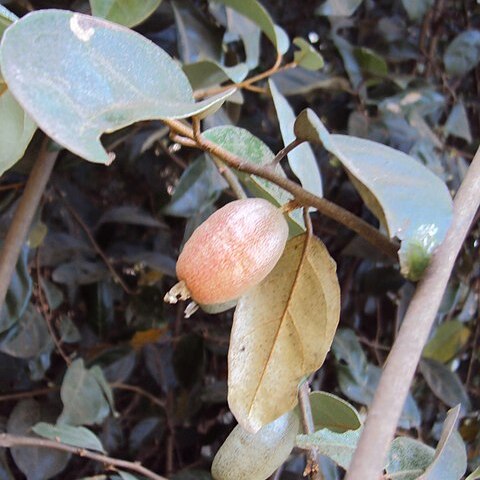Shrubs, straggling. Axillary branches sometimes spine-tipped. Petiole 5-11 mm; leaf blade elliptic to elliptic-oblong, 4.7-11 × 2.3-4.2 cm, abaxially with scales dense, silvery and/or scattered, brownish, adaxially glabrescent, lateral veins 5-11 per side of midrib, base rounded or cuneate, margin obscurely undulate, apex shortly acuminate or subacute. Inflorescence to 8-flowered. Pedicel 1-3 mm. Fruiting pedicel ca. 9 mm. Flowers silvery brown, scaly. Calyx tube tubular, 4-angled, [3-]4.5-9.5 mm, constricted above ovary; lobes ovate, 2-3 mm. Stamens inserted in throat or on narrow annulus, exserted; filaments ca. 1 mm; anthers 0.8-1.2 mm. Style hairy. Drupe ± ellip soid, 1.3-1.8 × 0.7-1 cm. Fl. Oct-Nov, fr. Feb-Mar. 2n = 28.
An evergreen thorny plant. It is a woody climber or shrub. It can be 12 m long. The roots are yellow. The branches arch over. The leaves are oblong and 3-6 cm long by 2-3 cm wide. The leaves have coppery brown scales underneath. The leaves are shiny on the upper surface and grey underneath. The fruit are round and red when ripe. They are 1.5 cm across. The nut has ribs and is winged.


